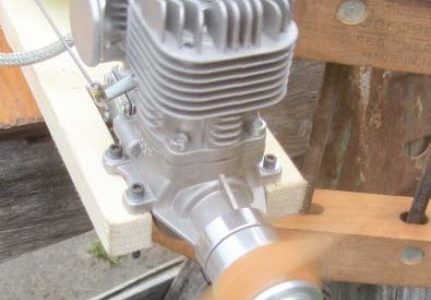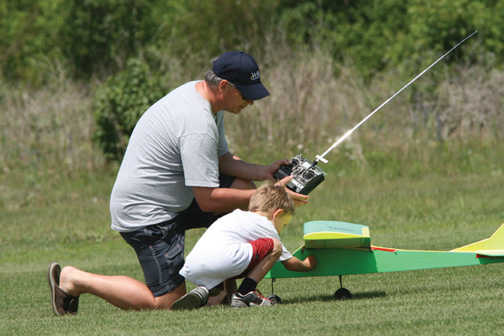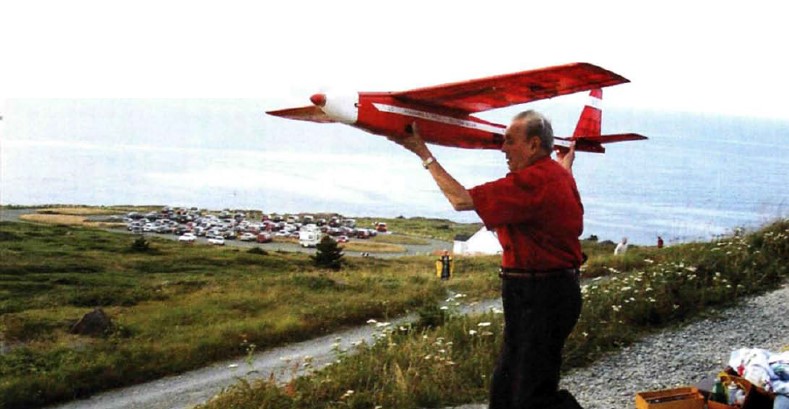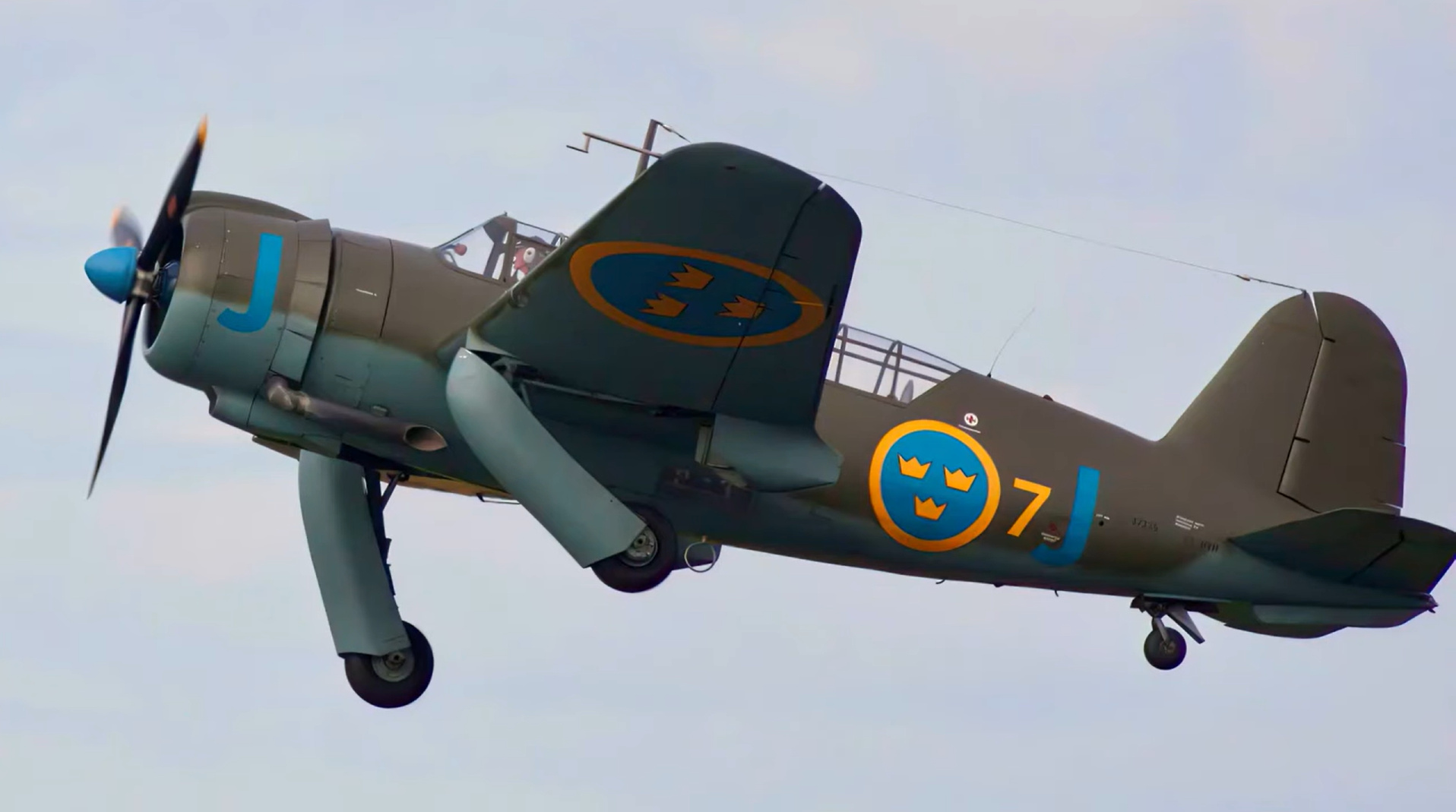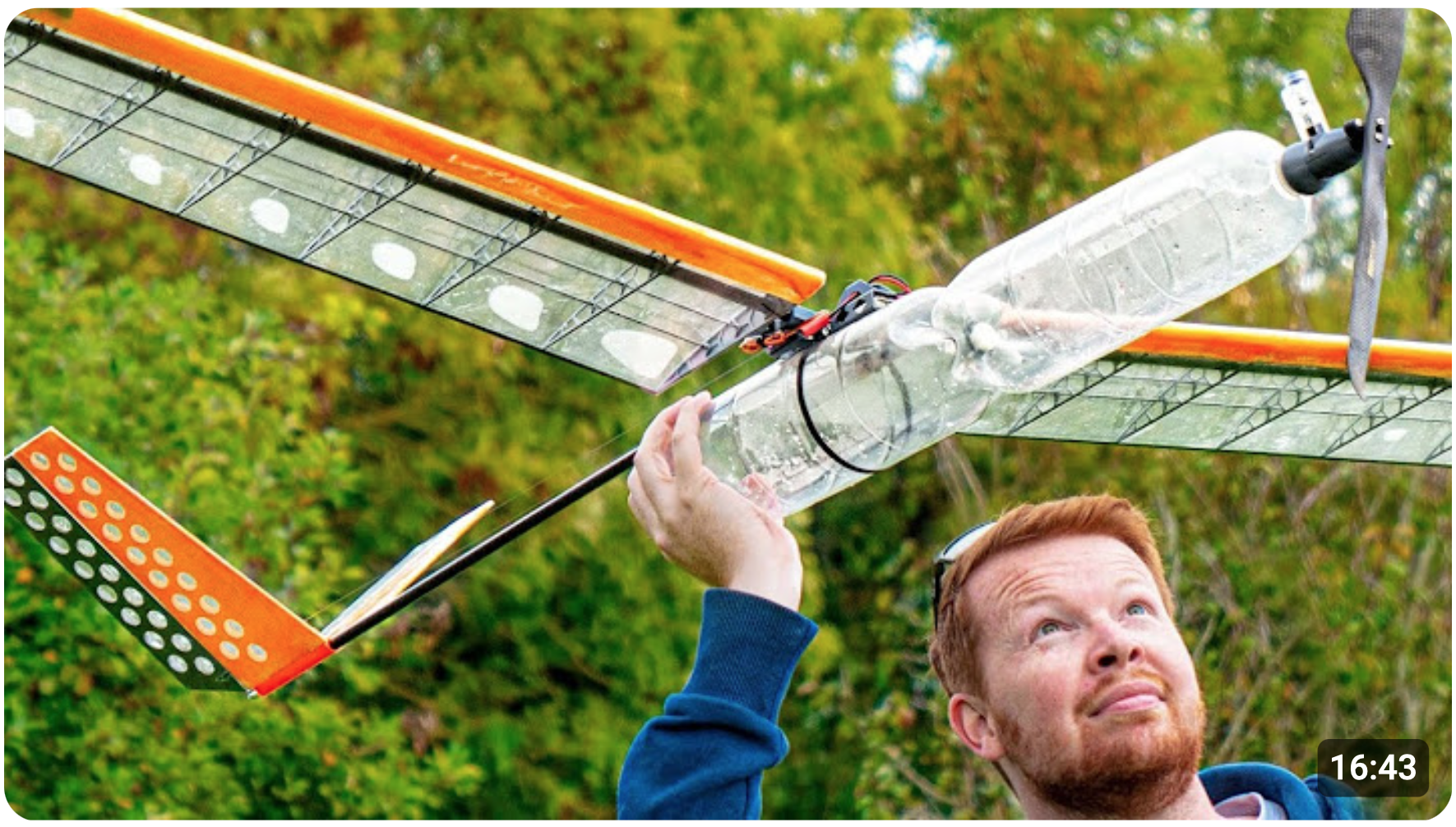Enjoy a look back at our review of the RCGF 20cc rear exhaust engine!

The RCGF rear exhaust (20RE) is a new 20cc gas engine just added to the RCGF USA line. It is a rear-intake/rear-exhaust design, and it has side-mounting tabs similar to RC glow engines. the engine features electronic ignition and so eliminates the heavy flywheel used for magneto-driven engines. And having both the carburetor and muffler located aft of the cylinder head, it makes for a very narrow installation footprint. Being such a compact engine, the 20RE is ideal for any sport or scale plane in the .90 to 1.20 engine range, and some guys are even getting these engines shoehorned into .50- to .60-size warbird ARF racers.
Located in Sierra Vista, Arizona, RCGF USA is the factory-authorized and factory-supplied service center for the United States. Joe and Patti Nelson take pride in supplying real factory-spec RCGF engines, which they test-run individually before shipping to their customers. They also offer quick parts availability for repair, with fast turnaround times anywhere in the continental United States.
UNIQUE FEATURES
As mentioned, the engine has electronic ignition, and the RCGF DC-CDI module features auto-advance for easier starting and smooth throttle response. The power requirements for the ignition module are from 4.8 to 8.4 volts, which makes compact 2S 7.4V LiPo or 6.6V A123 packs good choices. A minimum of 800mAh is recommended for powering the engine’s ignition system. The module case is compact with no attachment tabs, so the case should be wrapped in foam for protection. It features a metal-shielded spark-plug lead and a metal spark-plug cap with a locking ring for secure attachment. Also included are safety clips for the battery, and sensor wire connectors and spiral wire protectors for the wire leads. There are three leads coming from the module: one is for the battery pack (black and red leads), another for the ignition sensor (with the female connector), and the third for use with telemetry or a Pegasus tachometer. (Do not attach a battery pack to the latter lead as it will damage the module.) All of the connectors are Futaba type.
Overall, the fit and finish of the 20RE is very good with a high-quality surface treatment. The engine comes with two composite engine mounts to secure the engine to the firewall; a muffler; a spark plug; required machine bolts; a metal heat shield that goes between the engine and the muffler for proper cooling; an exhaust gasket; and all required nuts, bolts, and washers. There is also a large locking prop nut as well as an extended prop nut with a threaded center for use with spinners. The carburetor is a typical pumper type, which uses piston pulse pressure to drive its diaphragm. It is equipped with a choke and a spring-loaded throttle butterfly valve. The accessory package comes with an extended metal throttle arm, which can replace the industrial throttle arm. I used brass Du-Bro E/Z Connectors (dubro.com) and a length of thin music wire for my throttle linkage.
Internally, the engine has an aluminum piston with a single steel ring attached to the connecting rod with a needle-bearing supported wristpin. The wristpin is secured in place with two wire E-clips. The crankshaft has dual (front and rear) bearings for support, and the prop hub is set up with a threaded propeller attachment with a safety nut and prop washer. Gaskets seal both the cylinder head and the backplate to the engine case. Two gaskets and a molded plastic isolator block shield the carburetor from excess engine heat. Four bolts secure the cylinder head, while three hold the backplate in place.
SPECIFICATIONS
- Engine: RCGF 20RE
- Distributor: RCGF USA (rcgfusa.com)
- Type: 2-stroke, piston-valve-type gasoline
- Displacement: 20cc (1.22 c.i.)
- Bore: 32mm (1.26 in.)
- Stroke: 24mm (0.95 in.)
- Carburetor: RCGF pumper
- Ignition: RCGF DC-CDI (electronic w/auto-advance)
- Power supply: 4.8 to 8.4V
- Max output: 2.8h
- Speed range: 1,500 to 10,500rpm
- Fuel mix (recommended): 30:1 (90% high-octane unleaded gasoline)
- Propellers (recommended): 16×6, 16×8
- Spark plug: NGK CM6 type
- Engine package (included): Electronic CDI ignition, muffler, spark plug, gaskets, bolts, throttle arm extension, and manual
- Price: $229.99
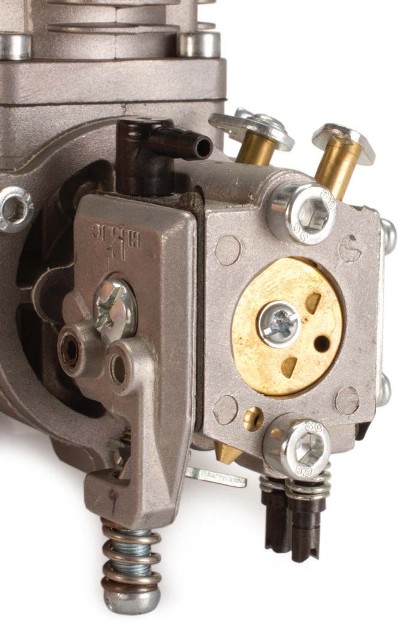
The carburetor is a typical pumper type, and it is equipped with a choke. The throttle arm is spring loaded to the closed position.
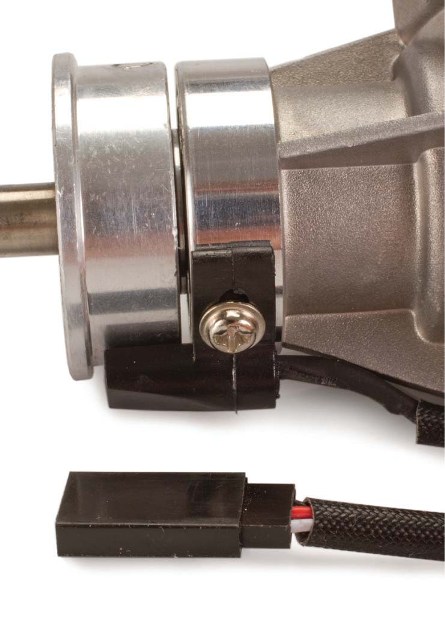
Equipped with an electronic ignition system, the engine has a magnet imbedded in the propeller hub that triggers the Hall effect sensor attached to the front of the engine case.
ENGINE SETUP
Before firing up any gas engine, the first thing required is a proper installation of the fuel system, with an inline fuel filter installed between the engine and gas tank. For the review, I simply attached the engine to my test rig so that I could get to everything easily while making adjustments. Joe always says that you should first start the engine with the factory settings and only after that should you try making adjustments to the carburetor. He test-runs every engine he ships. I also used a heavy-duty ignition switch and a fully charged ignition battery pack.
As with most gas engines, there is no specific engine break-in required, but it is recommended to do your first few runs with regular 90-octane gasoline mixed with high-quality petroleum-based two-cycle oil at a 30:1 ratio. Run the engine for about 20 minutes at about 2,500rpm using a slightly smaller prop than the size you intend to fly with. If you do this with the engine mounted to your airplane, remove the cowling for additional engine cooling. The proper run-in period for the engine is about 2 gallons and then you can switch to a fuel mix of about 50:1. At this time, the high-and low-end needles may need to be fine-tuned for optimal performance—just remember to start with the factory settings from the start.
RCGF USA supplies propellers, and the recommended prop sizes are 16×6 and 16×8. I found that the RCGF props did not require any adjustment to balance properly, but always check your propellers with a quality prop balancer to minimize engine vibration.
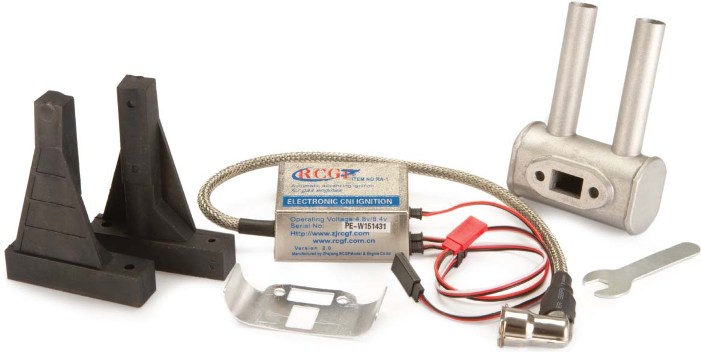
Here are some of the accessories included with the engine. Hardware is also included.
STARTING THE ENGINE
For this review, I used several propellers, each checked for proper balance with my Du-Bro balancer. Starting the engine is very easy. Open the throttle fully, close the choke, and flip the propeller over until you see gas flowing through the fuel line and into the carburetor. Switch on the ignition system, and continue flipping the prop until you hear the engine “cough,” indicating that the engine is properly primed. Now open the choke, bring the throttle to about quarter throttle, and flip the prop a few more times. After about four or five flips, the engine should fire up and settle into a smooth idle. For safety, we recommend using a Sullivan Products electric starter (sullivanproducts.com). While running engines on my test stand, I use a servo and a spare receiver to control the throttle with my transmitter. Allow the engine to warm up for a few minutes before advancing the throttle.
After running about 10 oz. of fuel through the new 20RE, it ran smoothly, with a steady transition from idle to full power. Throughout the test run, using the various propellers mentioned, I did not feel the need to adjust the needle valves—just as Joe had suggested. After running a gallon or two through the engine, you might be able to tweak the carburetor settings slightly to gain a little more on the top end, but from the start, the idle was very solid.
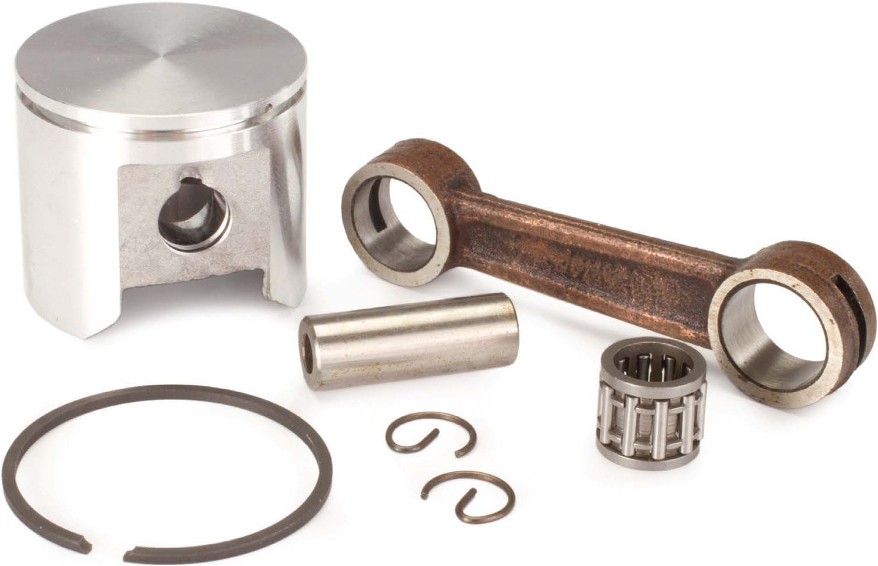
Like all RCGF USA engines, the 20RE has quality internals like this aluminum single-ring piston and steel ring, wristpin, forged connecting rod, E-clips, and upper needle bearings. Needle bearings also support the lower end of the conrod.
BOTTOM LINE
If you are looking for a smooth, easy-to start 20cc gas engine for your next sport flier or scale project, I would highly recommend the new 20RE from RCGF USA. It is well built, has solid performance, and is backed with excellent customer service. Priced at $229.99, the 20RE is an excellent value.
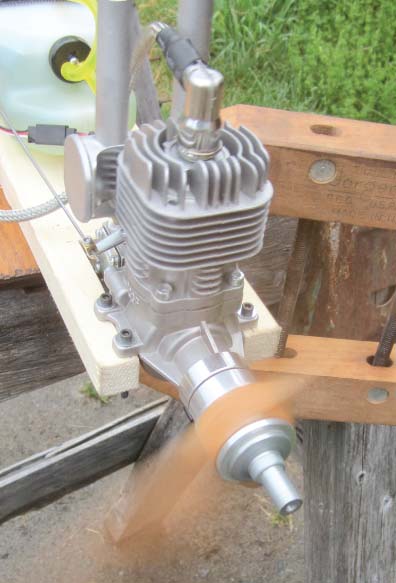
Shown here running on the author’s test rig, the engine is easy to start and is relatively quiet for a 20cc-size gas engine. The muffler is very effective.
PROPELLER PERFORMANCE
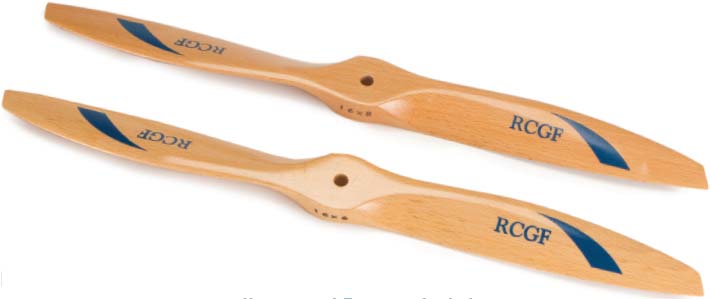
The RCGF propellers shown here required no balancing.
Running the engine on my test rig, I was able to run a few propellers, and I recorded the rpms for the top end and for idle settings. I used a Du-Bro 20-oz. fuel tank with gasoline-compatible fuel line and tank stopper. I used a RCGF, Falcon (falconpropellers.com), APC (apcprop.com), and Master Airscrew (masterairscrew.com) composite propellers, each balanced with my Du-Bro balancer before each test run.
| Brand | Size | Type | Max rpm | Idle rpm | Sound level (db) |
|---|---|---|---|---|---|
| RCGF | 16×8 | Wood | 7,300 | 2,100 | 80.1 |
| RCGF | 16×6 | Wood | 7,500 | 2,000 | 82.3 |
| Falcon | 16×8 | Wood | 7,450 | 1,900 | 84.2 |
| Falcon | 16×6 | Wood | 7,600 | 2,000 | 82.5 |
| APC | 15×8 | Composite | 7,600 | 1,900 | 79.5 |
| APC | 15×6 | Composite | 7,700 | 1,950 | 78.3 |
| Master Airscrew | 16×8 | Composite | 7,700 | 1,800 | 81.4 |



